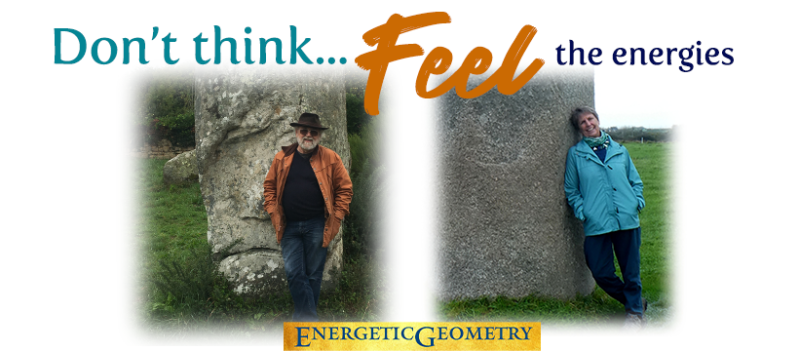The winter solstice is fast approaching us.
It is when the sun starts slowing down, stops, and reverses direction in the sky. For our ancestors, who watched the sun, the moon, the stars, and constellations, it was a momentous time of the year. It was a day when the sun's light was the shortest and the night was the longest.

For many, it was seen as the sun’s rebirth.
From this point on, the days would become longer and longer until the sun reached a time of equal day and equal at the Spring Equinox. Our ancestors left huge stone monuments as remnants of their worship of the sun for us to marvel at today.
One fine example is Newgrange in Ireland. During the short period of time leading up to and just past the winter solstice, the sun illuminates a pathway through the long, dark passage to the end of the chamber. It is an engineering and astronomical feat that delights people even today. A roof box controls the angle and length of light shining inside and the amount of light on the floor and walls. From this information, the Neolithic astronomers could calculate the exact day of the solstice during sunny days, something rivaling the abilities of the ancient Greeks and Romans.
Another fascinating bit about Newgrange no one talks about is the presence of a stone basin at the end of the chamber. It is poised to catch the first rays of light during the winter solstice sunrise. Imagine this carved stone basin filled with water and then being kissed by the first light of the winter solstice sunrise. This water would be imbued with the energetic qualities of this special time.
The winter solstice sunrise is known in the tradition of the European Master Builders to have the qualities of wisdom and rebirth and has a surprisingly sexy quality. It makes you wonder about the ceremonies and rituals these people engaged in and how they would use this sacred water.

Have you ever tracked the sun’s movements over a year?
Maybe you have a kitchen window you can gaze out of and watch the sunrise or sunset. Like me, you may drive the kids to a bus stop for school. I remember vividly the day I realized that the sunrise had moved positions. I had been studying Solar Geometry for probably ten years. Intellectually, I knew the sun moved throughout the year. I could draw solar mandalas in different locations, showing the different angles of the solstice sunrises and sunsets. I knew what the Goosefoot (a drawing of the angles of the sun of a specific location) was and how it was carved into stone by the Neolithic, Celtic, and then the stone masons who built churches and cathedrals.

But it was a totally different experience, seeing the movement in a landscape I traveled each day.
One of our Energetic Geometry Certification students recently posted on Facebook his insights into the sun’s yearly movements. He reflected on the great distance the sun moves north and south each year and how easily it can be to lose track of the movement. The sun's movement and changing energetic qualities of the sun through the year fascinated him.
We teach our students how to become aware of the sun's differing energetic qualities during the summer and winter solstices and at the equinox.
The summer solstice is when the sun has the most powerful energy. It is high in the sky, and you can feel its radiance. All sacred structures are built with solar geometry, a geometry connected to the sun, the cosmos, and the earth. Because of this, you will find that sacred structures and their energies are the most potent at this time of year. During the Equinox, the sun has a quality of beauty and balance.
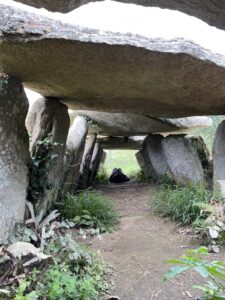
Those special structures aligned to the equinox sun are more active during this time of year. Last year, during the Fall equinox, the Deva of the covered passageway of Prajou, which happens to be oriented to the equinox, was very present and active.
For those of you who don't know what a 'Deva' is, they are the guardians of a place. They are called shining ones in Sanskrit and can be found in areas where the vibrations are the highest. Because of that, you often find them at churches, temples, menhirs, dolmens, etc. We share how to feel their energies during our Sacred Site Tours, which is a deeply profound and spiritual experience for many people.
Then, during the winter solstice, the sunrise has a quality of wisdom, rebirth, and a sexy feeling. I remember this past May, during a trip to Ireland, I visited Newgrange and noticed that the menhir positioned in front of the passage tomb opened my heart, was grounded, and definitely had some sexy qualities. The water vein went straight into Newgrange's passageway, too... Coincidence? I think not!
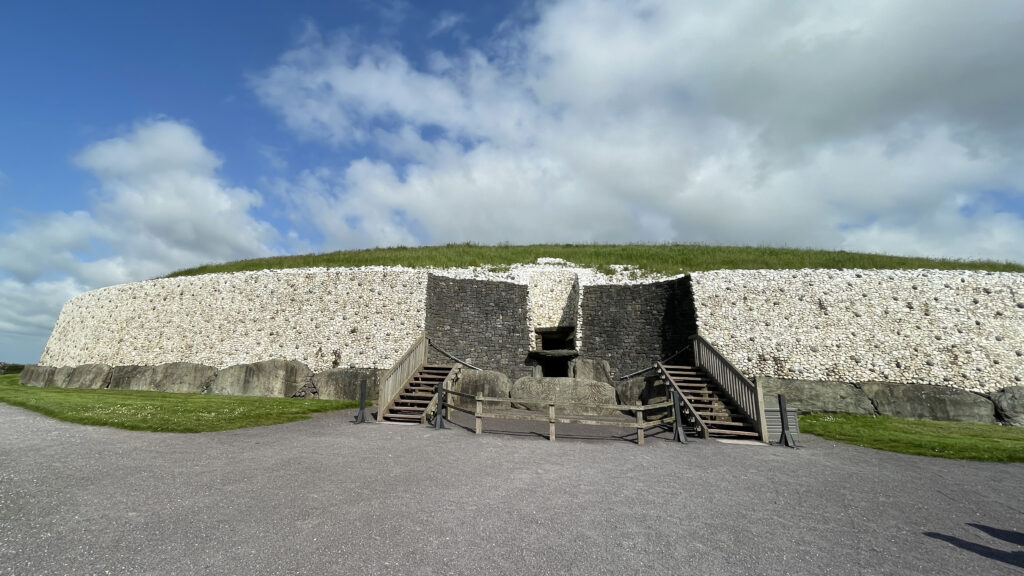
Another fascinating example of a covered passage oriented to the winter solstice is the fabulous La Roche aux Fèes in Esse, Brittany, France. It is truly awe-inspiring in not only its size but for the amount of subterranean water veins related to fertility flowing under it. We found fertility related to women, to men, and some related to life itself, crisscrossing under the giant stones. There are also many stories related to fairies building the structure because how can you explain mere mortals of long ago building such a huge place?
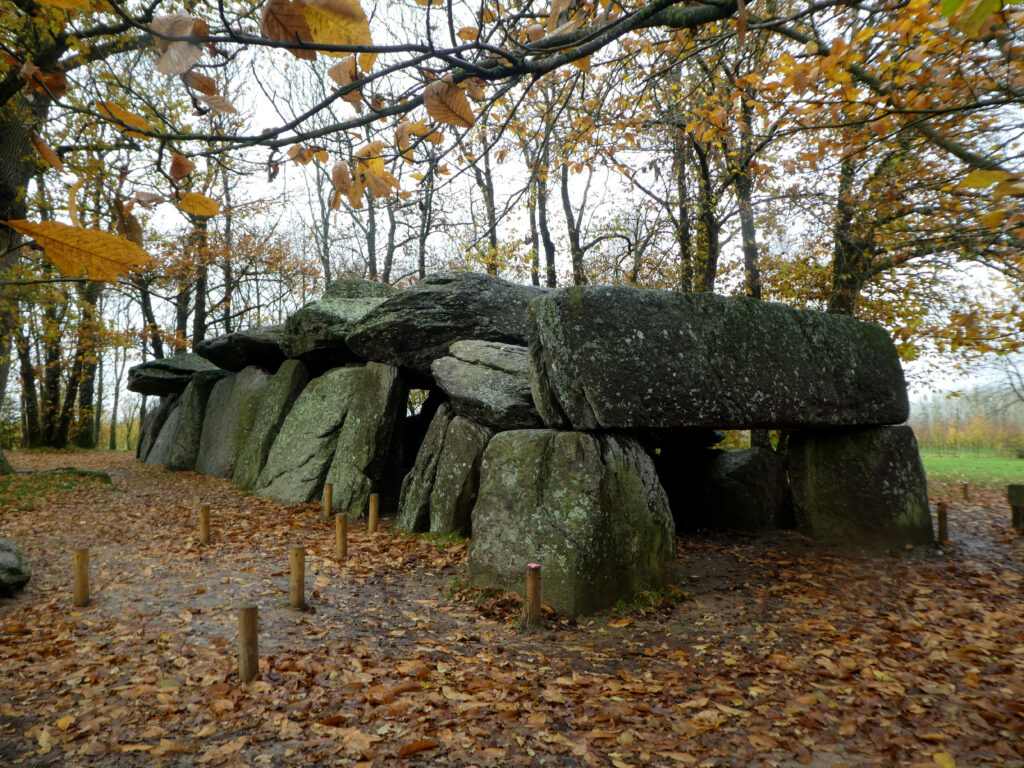
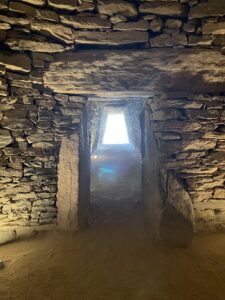
Spain has another amazing example of an alignment with the winter solstice, this time connected to the sunlight at noon. Tholos El Romeral is close to Antequera, in Andalucia, Spain. It is part of a Unesco World Heritage Site composed of three dolmens called the Antequera Dolmens. It has a long passageway with two beehive corbelled chambers built with small stones. At noon during the winter solstice, the sun shines down the narrow passageway to illuminate and fill the 2nd chamber with light.
Maybe this year, you can decode the mystery of why the Neolithic people made the great effort to build huge structures oriented to this special time of the year.
I'd love to hear your insights!
By Karen Crowley-Susani, December 2023
